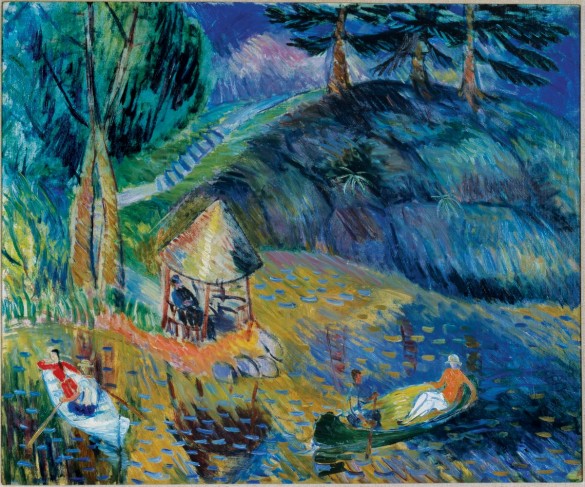
#8 William Glackens (American, 1870 – 1938), The Lake, c. 1913-18, oil on canvas, 25 1/8 x 30 in., Museum purchase with Council funds, AP.1987.2.1.
A native of Philadelphia, William Glackens began his artistic career as a newspaper illustrator. In 1891, he enrolled in evening classes at the Pennsylvania Academy of the Fine Arts and met Robert Henri (1865-1929), who encouraged Glackens to paint. After the National Academy of Design rejected Glackens’s work in 1907, he joined Henri and six others to establish a group of artists known as the Eight. Derisively referred to as the Ashcan School by contemporary critics, the Eight were noted for their images depicting the reality of life in industrialized surroundings.
Glackens traveled to France several times throughout his career. Significantly influenced by the works of the French Impressionists after a visit in 1912, Glackens shifted his focus from gritty urban scenes to images of middle-class leisure. This painting shows a lake in the White Mountains near Conway, New Hampshire, where the Glackens family spent several summers. The brilliant palette, tilted perspective, and loose brushstrokes found in this scene of languid boaters reflect the artist’s assimilation of the Impressionist style. The patterning in the water and heavy applications of paint create a dynamic, energized composition.
“The large brush strokes, vibrant colors, textures, and relaxed scene make this work dramatic, beautiful, and interesting to view.” – anonymous


